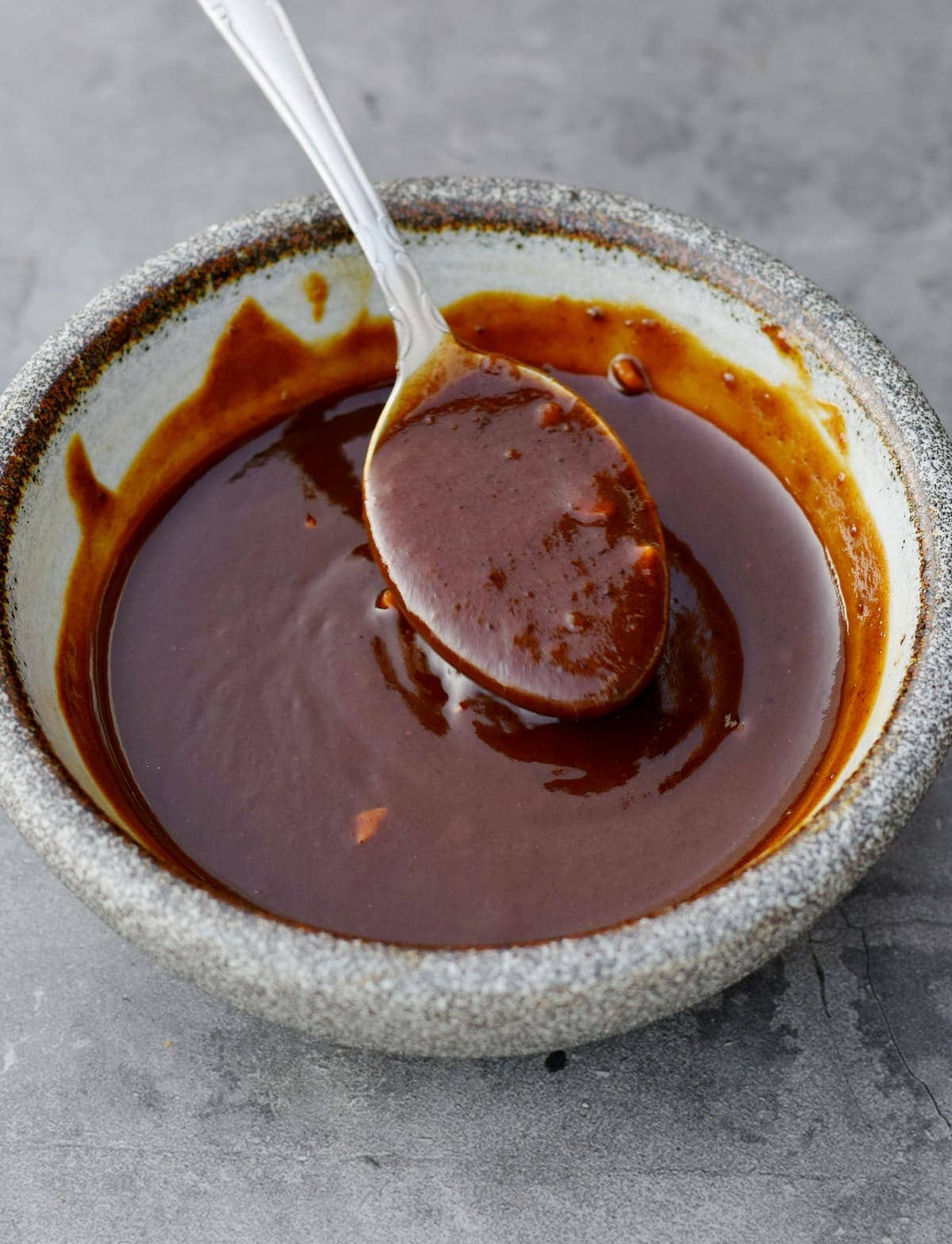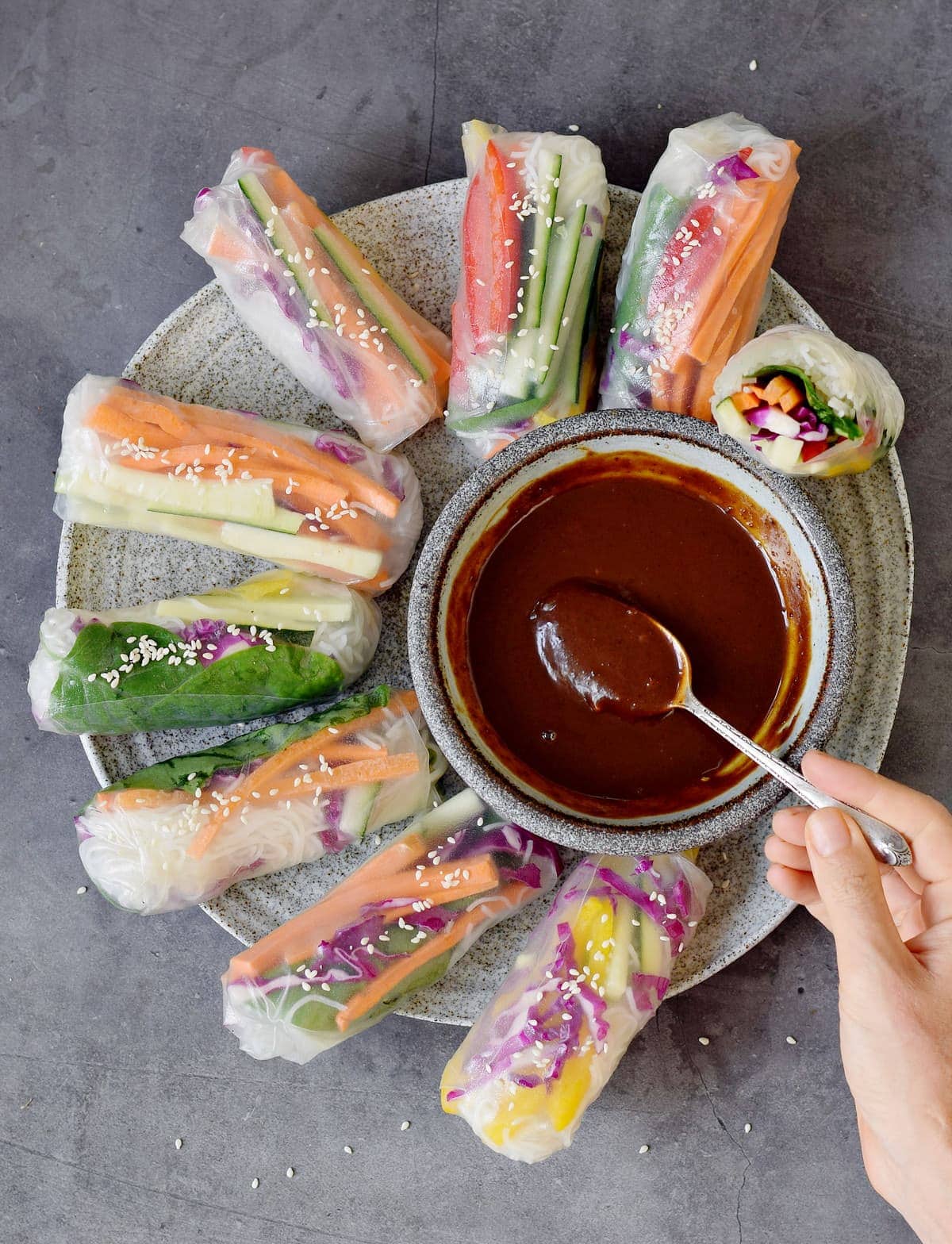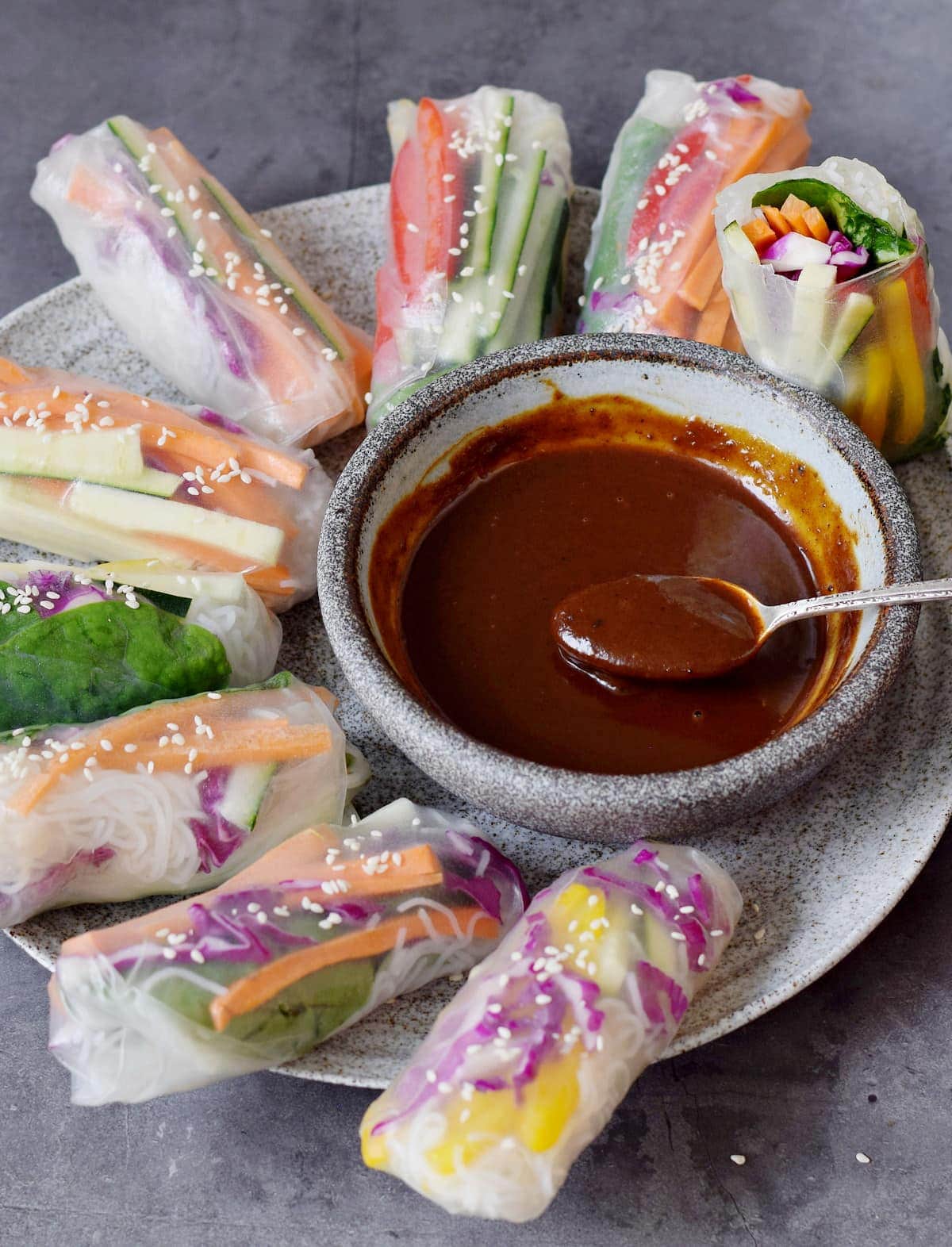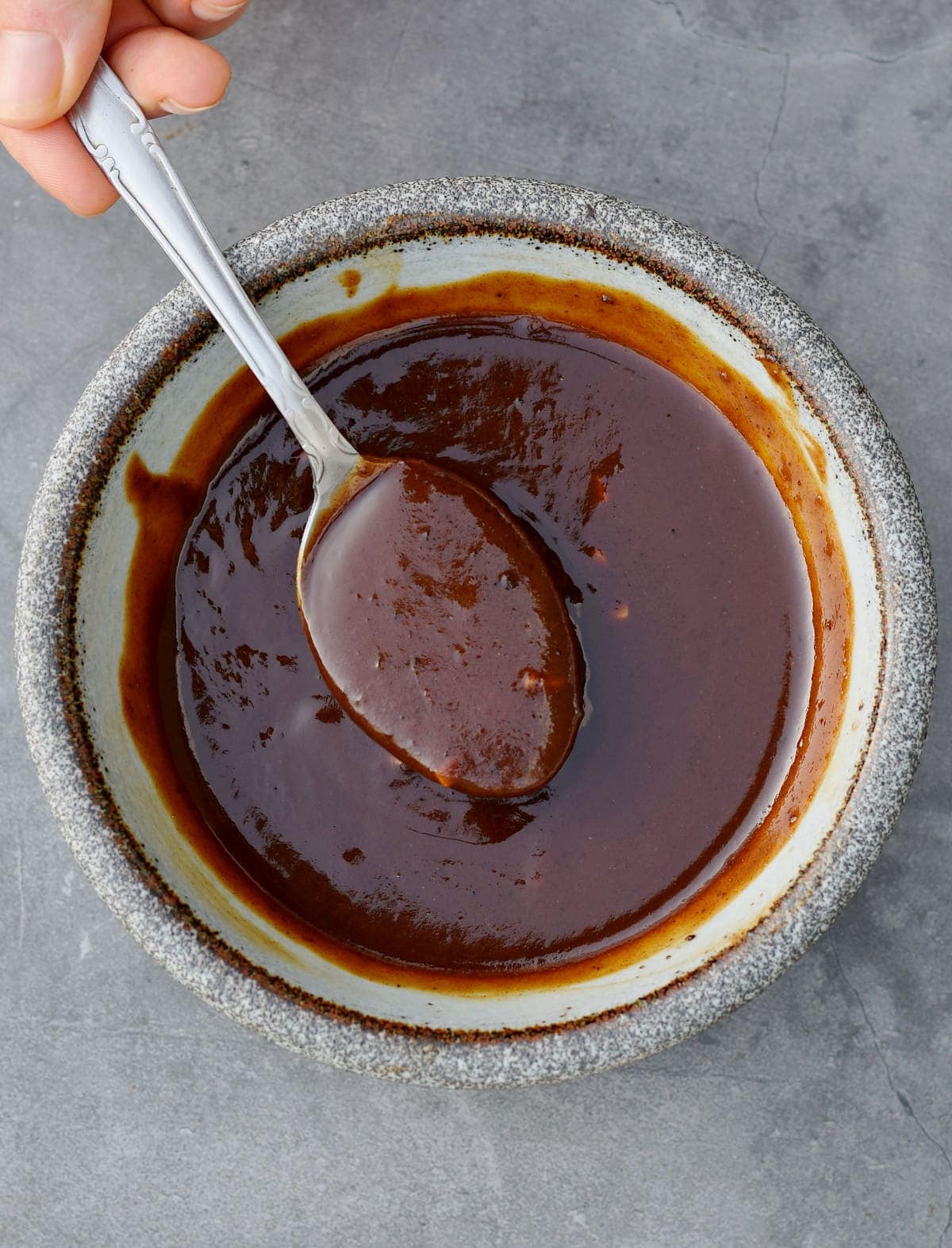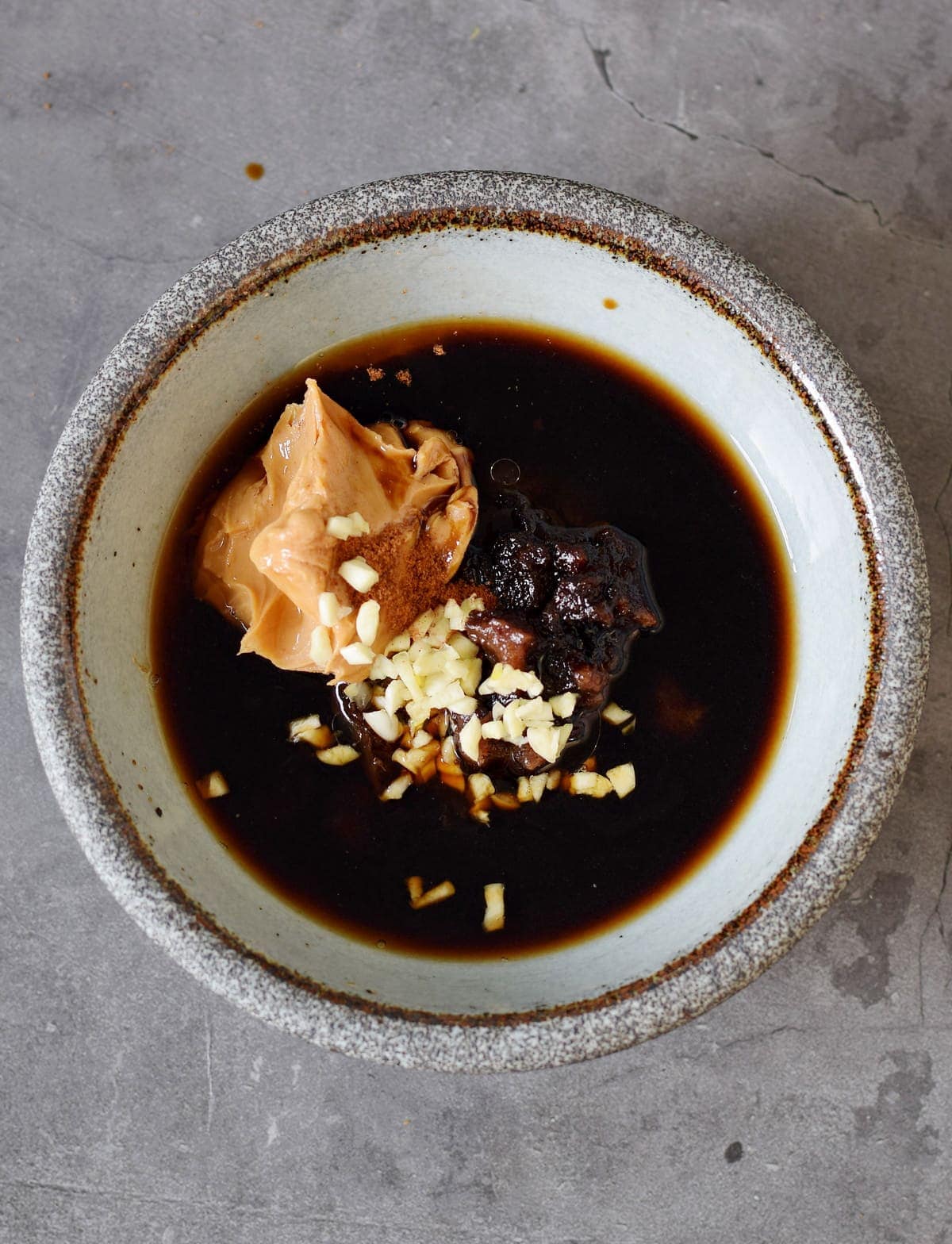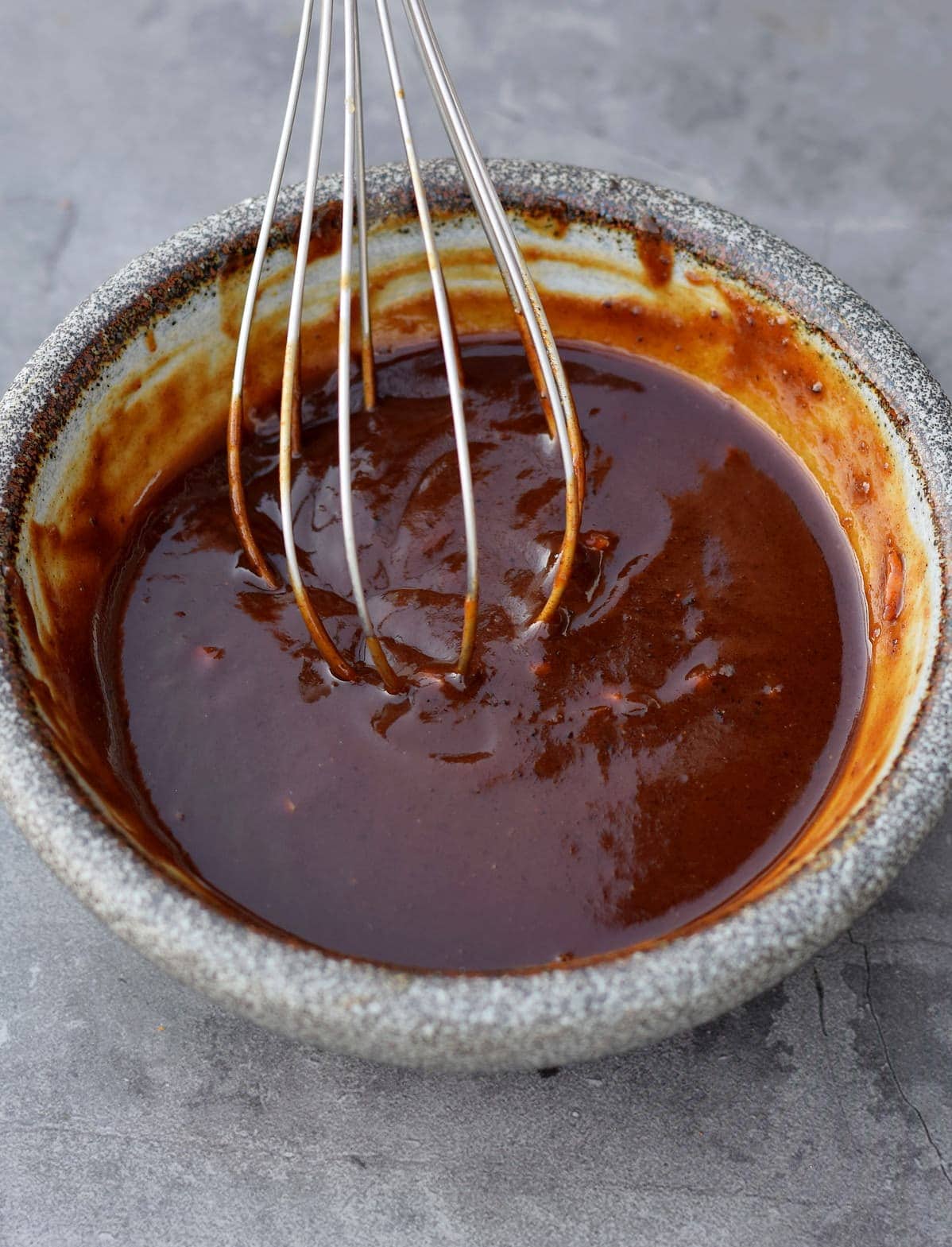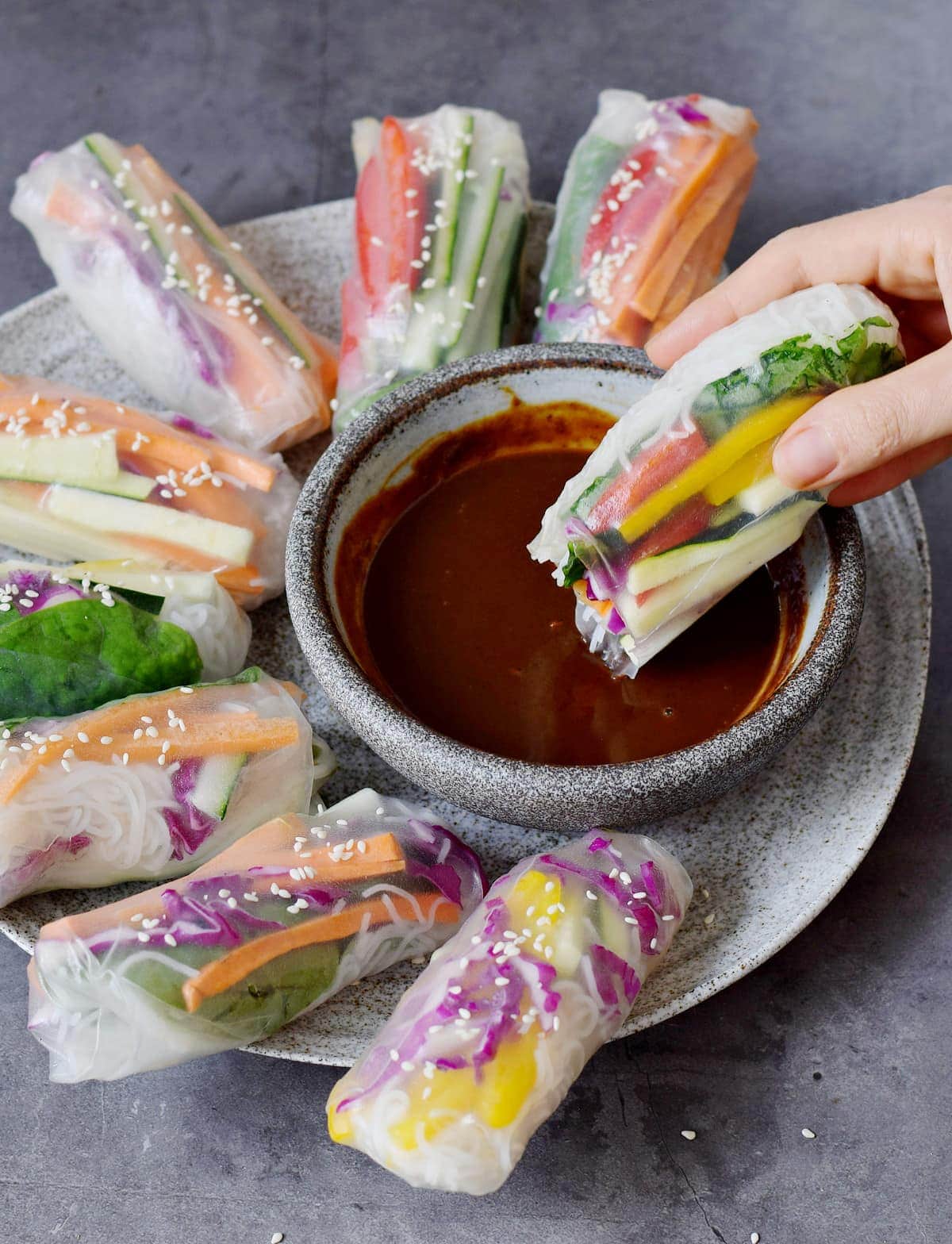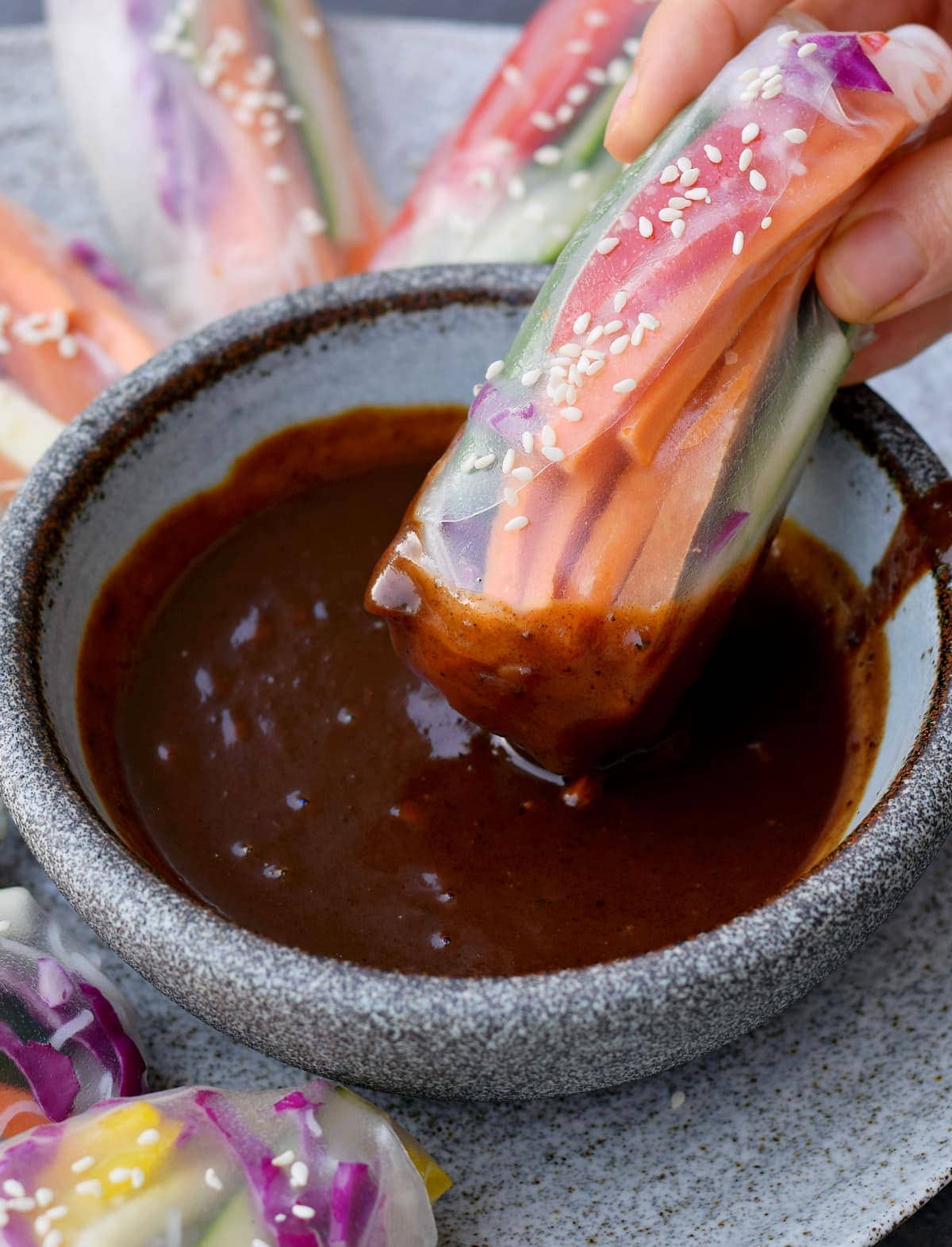Lately, I have tried out so many homemade stir-fry Asian sauces and dips because I just love their sweet, salty, and spicy flavor. Today, I want to share this homemade Hoisin sauce recipe with you which is the perfect dip for summer rolls or spring rolls, but it can be also used as a marinade or glaze!
What Is Hoisin Sauce?
It’s a popular southern Chinese sauce and widely used in Cantonese cuisine. If you live in the USA, you can buy it in Asian grocery stores or order it online. But it’s not available everywhere, in fact, I don’t have the possibility to buy it in a supermarket. Furthermore, in my opinion, homemade is always best. Not only is it healthier to make your own version (nobody wants to eat preservatives, refined sugar, and artificial coloring) but it’s often also cheaper! As per Wikipedia, Hoisin (海鮮) is actually the Chinese word for “seafood”, however, the sauce does not contain any seafood ingredients, so it’s naturally vegan. Why is it called “hoisin” then? Because the sauce was often used as an accompaniment to seafood dishes. Oyster sauce, which is another popular Chinese sauce, on the other hand, does contain seafood ingredients since it’s made from oysters.
Traditional Ingredients
The main ingredient of traditional Hoisin sauce is fermented soybean paste (e.g. Doubanjiang) which is quite salty, tangy, and flavorful. Since it’s not easily available in most countries, and furthermore not suitable for people with soy allergies, I offer different substitutes. Actually, I used peanut butter which is absolutely not authentic or traditional in any way, however, it adds a creamy and rich flavor. If you are allergic to soy and peanuts, you can use tahini or Chinese sesame paste (which is made from toasted sesame seeds).
How To Make Hoisin Sauce?
This recipe has only 2 simple steps, and it takes just 5 minutes to make the sauce. I will give you 3 different options on how you can make the sauce:
Option 1 – Whisk it together in a bowl
Add peanut butter, date paste, liquid sweetener, and molasses to a medium-sized bowl and stir with a whisk until smooth. Now add the remaining ingredients (except the cornstarch) and mix again until combined.
Option 2 – The food processor or blender method
Add all ingredients to a blender or food processor and blend until smooth. This method is best if you use whole pitted dates instead of date paste.
Option 3 – The saucepan method
If you want the sauce to be even thicker and smoother, I recommend this method. Add all ingredients including the cornstarch to a saucepan and stir with a whisk. Bring to a simmer and cook on low heat for about 30 seconds or until thickened.
No matter which method you are going to use, I would recommend tasting the sauce and if necessary adding more soy sauce/rice vinegar/sweetener/hot sauce, etc.
Homemade Date Paste
You don’t need to use date paste to make this delicious flavorful sauce. However, it’s great to have a homemade date paste in the refrigerator because it can be used for so many recipes. You can use it to make healthier desserts like muffins, brownies, or cakes if you don’t want to consume refined sugar! Here is how to make homemade date paste: Soak 120 grams of pitted dates in 100 ml (a little less than 1/2 cup) boiling water until softened. Then blend the dates with the soaking water in a food processor or mini blender until smooth. Use 4 tablespoons of the date paste for this recipe. Store leftover date paste covered in the fridge for up to 2 weeks or freeze it.
Tips & Substitutes
How to store? Store sauce leftovers in a glass jar with a lid in the refrigerator for up to a week, possibly even longer! Hot sauce: Can be left out if using Doubanjiang which is already spicy. If you aren’t using spicy fermented bean paste, I recommend adding hot sauce or Sriracha. Another option would be to use a pinch of red pepper flakes! Sweetener: Any liquid sweetener is fine. I used maple syrup, but you can also use any other sweetener if you don’t have any syrup at home. Some examples are agave syrup, brown rice syrup, date syrup, regular sugar, etc. Cornstarch: It’s optional to make the sauce a little thicker. You can use arrowroot flour, tapioca flour/starch, or potato starch instead of cornstarch. Soy sauce: I always use gluten-free dark soy sauce. A combination of light soy sauce and dark soy sauce is fine too. Make sure to use tamari (or a gluten-free soy sauce) if you are allergic to gluten (celiac). Use coconut aminos for a soy-free alternative Molasses: Not typical but it really adds an interesting flavor, plus it’s rich in vitamins and minerals. A little goes a long way, so don’t use more than the recipe calls for. If you don’t like the flavor of molasses (some people hate it) then leave it out and add more maple syrup instead. Serving suggestions: You can use this flavorful sauce in any stir-fry recipe, as a sweet & sour dip for summer rolls, vegan dumplings, or as a glaze or marinade!
Should you give this tasty Hoisin sauce recipe a try, please leave a comment below, and don’t forget to tag me in your Instagram or Facebook post with @elavegan #elavegan because I love to see your remakes!
If you love Asian food, definitely also check out the following flavorful, delicious vegan recipes:
Chinese Garlic Sauce Garlic Broccoli Stir-Fry Kung Pao Cauliflower Sticky Teriyaki Tofu Thai Coconut Curry Soup
If you are using Pinterest, feel free to pin the following photos:
